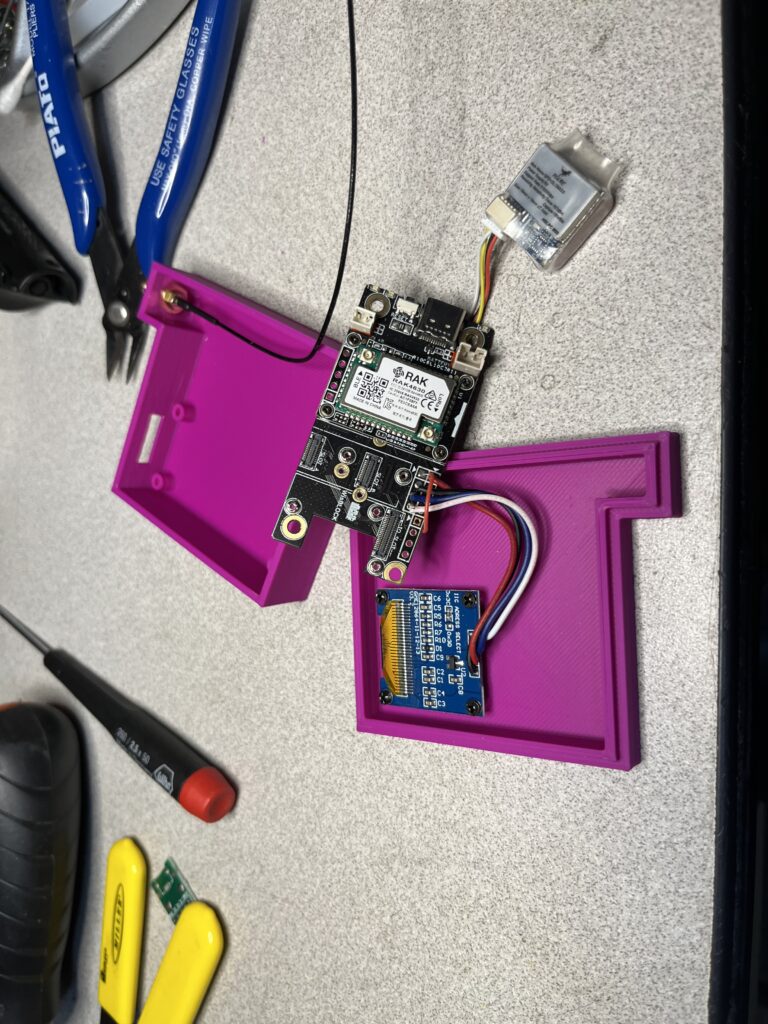“Meshtastic® is a project that enables you to use inexpensive LoRa radios as a long range off-grid communication platform in areas without existing or reliable communications infrastructure. This project is 100% community driven and open source!”
I’m not sure where I first heard about this new technology called LoRa or “Long Range” and Meshtastic but I was curious what it was all about and wanted to learn more. So, I visited the Mestastic web site
From what I’ve read, the basic idea behind Meshtastic is that with enough nodes to form an adequate peer-to-peer mesh, any node can communicate with any other node in the mesh. Users can exchange encrypted text messages and their locations without an Internet connection. Extended communications is possible using the MQTT protocol over the Internet.
With a Ham Radio License, you may use higher power and higher gain antennas with Meshtastic, however, you cannot use encryption. You must identify according to FCC rules (every 10 minutes with your FCC granted call sign).
Devices can register as many different types from and end-user to a routing station designed to provide repeater service to the mesh.
Note that with a GPS enabled node, your position is sent out to other nodes by default. Even without GPS enabled, your position can be determined using triangulation, e.g. the signal strengths reported by multiple nodes.
You can purchase the necessary hardware on AliExpress or Amazon.

I first bought a Heltec Wireless Stick (sold as “MakerFocus LoRa Module SX1262″ on Amazon) which contains a 915 MHz LoRa transceiver, ESP32 SoC Microcontroller (which I’m already very familiar with), Wifi, and Bluetooth with a 0.49” OLED display for $25! This is a tiny 60x22mm module. I 3D printed a nice little case for it and was up and running in no time at all!
I downloaded the Meshtastic App for Mac OS/X and was able to get it talking to my new little gadget fairly quickly. There are Meshtastic Apps for Android, iOS, MacOS/X and Windows.
In the US, Meshtastic uses the 915MHz band. Specifically, the default frequency is 906.875 MHz (channel 20).
On the app, I started seeing other nodes appear. There is quite a bit of activity here in South Orange County including what appear to be some fairly high level nodes located at a water tank site.
I had to buy more nodes to experiment with range testing and such. I bought quite a few more!
I bought a LILYGO T-Beam from Amazon I was very confused when the package arrived and there were two of them. They were set up for range testing. One had transmit firmware and the other had receive firmware. I played around with that functionality for a while and then decided I wanted to flash the Meshtastic firmware onto them. The LILYGO T-Beam devices have built in GPS modules along with WiFi, Bluetooth, ESP32 MPU and the SX1262 915MHz LoRa transceiver. They also have a battery holder for an 18650 cell so they are ready to go portable right out of the box. There are many 3D printable cases designed for them.
To my dismay, I could not get anything to talk to their USB serial ports. After reading a lot about them on the web, I found a discussion of using an external USB to TTL adapter and connecting directly to the ESP32 board. That worked great! I was able to flash the firmware onto both of them using this technique. Also, the on-board serial ports came back to life after doing this. They are using a very cheaply designed USB to TTL interface chip supposedly due to supply chain problems.

These first nodes that I bought (Heltec Wireless Stick, LILYGO T-Beam) required the use of an external device attached via WiFi or Bluetooth to be useful. They do show messages on their OLED displays. The super small 0.49″ display on the Heltec is practically useless except when pairing via Bluetooth.
The LILYGO T-Deck looks like a Blackberry device and contains a very nice keyboard and screen. No computer or phone necessary!

To make it really useful, I still need to add a GPS and finish printing a case that can hold the T-Deck< GPS, better external antenna, and a 3.7V Lithium battery.
One of the newest nodes I have is the RAK Wireless WisBlock system. It contains a base “motherboard” (RAK19007) and RAK4631 (Nordic nRF52840 MCU with BLE 5.0 and 915MHz Semtech LoRa transceiver.) This modular system allows you to combine various modules to create whatever you want – Meshtastic Node, remote sensor board, etc. There is a slick modular GPS board option but I decided to use a GPS I already had.
I also added a 0.96″ SSD1306 OLED display and battery to create a neat little Meshtastic node. An IPEX to SMA cable allows for an external rubber duck antenna (the module includes a flexible PCB antenna) I designed a case for it which makes a nice portable package. The battery is charged by a USB-C connector that also provides a serial console and the ability to mount the node as a disk drive for Firmware updates.



Leave a Reply